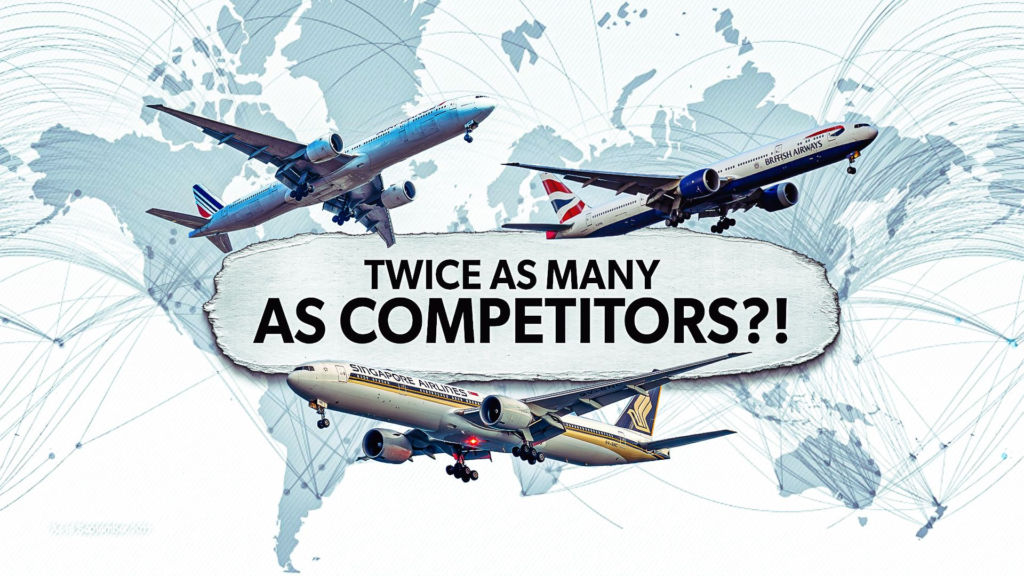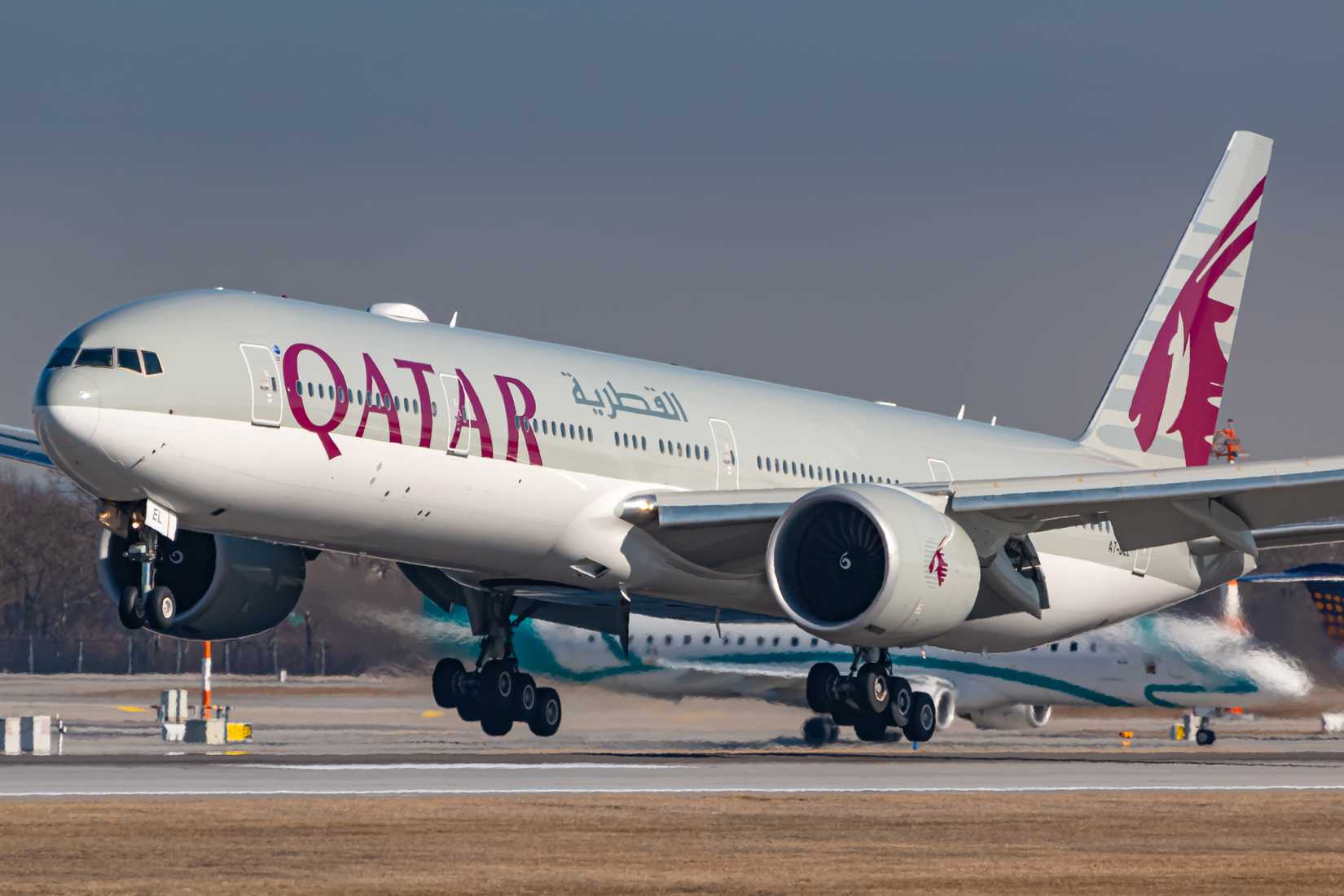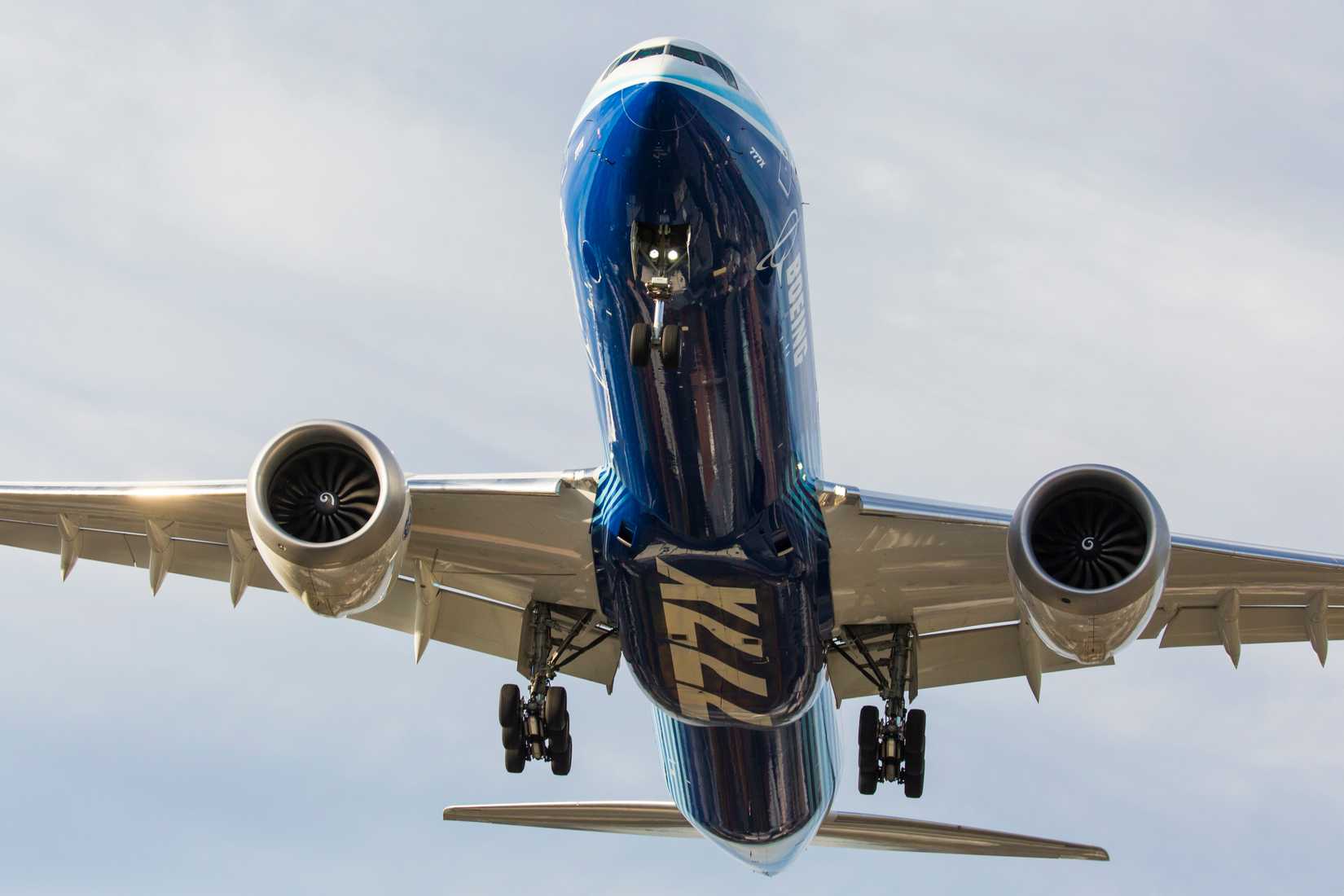ETOPS certification allows twin-engined aircraft to fly longer distances from the nearest diversion airport, opening up a wide range of long-haul and ultra-long-haul routes that were previously not viable, either operationally or financially. One aircraft in particular has been instrumental in driving ETOPS certification – the Boeing 777.
- Launch Customer(s)
-
United Airlines
- Manufacturer
-
Boeing
- Aircraft Type
-
Widebody
- First Delivery
-
May 15, 1995
- Number Delivered
-
1,735
- Production Sites
-
Everett, Washington, United States
In this article, we will take a look at the Boeing 777 – the aircraft that has operated the most ETOPS flights. We will also consider the concept of ETOPS and its impact on the economics of long-haul flying and the wider aviation industry.
What is ETOPS?
ETOPS stands for Extended-range Twin-engine Operational Performance Standards, and is a certification that allows twin-engine aircraft to fly routes that are a certain distance (measured in flying time) from the nearest suitable airport for emergency landings.
To receive ETOPS certification, both the aircraft type and the operating airline must meet strict requirements. These include proven engine reliability, appropriate electrical and hydraulic systems, comprehensive maintenance programs, and adequately-trained flight crews. Aircraft must also demonstrate the ability to fly safely for extended periods on one engine and handle emergencies during those intervals.
ETOPS & The Boeing 777
The Boeing 777 is one of the most successful widebody aircraft in history, and more than 1,750 have been built and delivered to airlines across the world since production began in 1993. According to the US manufacturer, the aircraft now operates more than 73,000 flights per month, and to date, the Boeing 777 has completed over three million ETOPS flights, which is more than twice as many as all competitor aircraft combined.
Historically, twin-engine aircraft were limited to flying within 60 minutes of an alternate airport due to safety concerns in the event of an engine failure. However, the Boeing 777 was the first aircraft to be ETOPS-certified at its entry into service, achieving ETOPS-180 (meaning it could fly routes up to 180 minutes from the nearest diversion airport). This was a groundbreaking shift in aviation, and allowed airlines to operate more direct and fuel-efficient routes over oceans and remote areas, which had previously been the domain of three- and four-engined aircraft such as the McDonnell Douglas DC-10 and the Boeing 747.
The US Federal Aviation Administration (FAA) later updated its regulations to allow Boeing 777s with GE engines to fly up to 207 minutes away from the nearest diversion airport, and in 2011, it extended this again to up to 330 minutes. This has changed the economics of long-haul flying, allowing fuel-efficient twin-engined aircraft to operate long-haul routes instead of their fuel-hungry four-engined counterparts.
For example, the Boeing 777-200LR is now technically capable of flying nonstop between London Heathrow Airport (LHR) and Sydney Airport (SYD). Although this route is not currently flown nonstop by any airline, it highlights how far things have come since the six-stop journeys of the 1960s onboard the 707. Qantas will soon launch nonstop flights between the two airports as part of the airline’s Project Sunrise, albeit with its specially adapted Airbus A350-1000s, rather than the Boeing 777.
The Longest Boeing 777 Routes In The World
Thanks to its ETOPS certification, the Boeing 777 is able to operate some of the longest flights in the world. The longest commercial flight currently operated by the 777 is Qatar Airways’ service between its hub at  Doha Hamad International Airport (DOH) and Auckland Airport (AKL) in New Zealand, covering a distance of 9,030 miles (14,533 km).
Doha Hamad International Airport (DOH) and Auckland Airport (AKL) in New Zealand, covering a distance of 9,030 miles (14,533 km).
The world’s longest commercial routes currently flown by the 777 are outlined in the table below:
|
Ranking |
Departure Airport |
Arrival Airport |
Airline |
Aircraft |
Distance |
|---|---|---|---|---|---|
|
1 |
Doha Hamad International Airport (DOH) |
Auckland Airport (AKL) |
Qatar Airways |
Boeing 777-200LR |
9,030 miles / 14,533 km |
|
2 |
Bengaluru Kempegwoda International Airport (BLR) |
San Francisco International Airport (SFO) |
Air India |
Boeing 777-200LR |
8,691 miles / 13,968 km |
|
3 |
Manila Ninoy Aquino International Airport (MNL) |
New York John F. Kennedy International Airport (JFK) |
Philippine Airlines |
Boeing 777-300ER |
8,519 miles / 13,712 km |
|
4 |
Mumbai Chhatrapati Shivaji Maharaj International Airport (BOM) |
San Francisco International Airport (SFO) |
Air India |
Boeing 777-200LR |
8,401 miles / 13,520 km |
|
5 |
Vancouver International Airport (YVR) |
Singapore Changi Airport (SIN) |
Air Canada |
Boeing 777-200LR |
7,965 miles / 12,816 km |
|
6 |
Mumbai Chhatrapati Shivaji Maharaj International Airport (BOM) |
New York John F. Kennedy International Airport (JFK) |
Air India |
Boeing 777-200LR |
7,797 miles / 12,548 km |
|
7 |
Vancouver International Airport (YVR) |
Sydney Airport (SYD) |
Air Canada |
Boeing 777-200LR |
7,750 miles / 12,472 km |
|
8 |
Dubai International Airport (DXB) |
Adelaide Airport (ADL) |
Emirates |
Boeing 777-200LR |
6,834 miles / 10,996 km |
A Brief History Of The Boeing 777
The Boeing 777 entered commercial service in June 1995 with ![]() United Airlines, bridging the gap between the smaller 767 and the larger 747. Since then, the US manufacturer has built and delivered more than 1,750 examples to airlines across the world. Boeing went on to develop the 777-200LR and 777-300ER specifically to offer carriers additional flexibility in serving the long-haul and ultra-long-haul nonstop routes that passengers tend to prefer.
United Airlines, bridging the gap between the smaller 767 and the larger 747. Since then, the US manufacturer has built and delivered more than 1,750 examples to airlines across the world. Boeing went on to develop the 777-200LR and 777-300ER specifically to offer carriers additional flexibility in serving the long-haul and ultra-long-haul nonstop routes that passengers tend to prefer.
The Boeing 777-300ER in particular has proven extremely popular, and typically carries up to 396 passengers in a standard three-class configuration, with a range of almost 9,000 miles (14,484 km). Meanwhile, the 777-200LR can connect virtually any two cities in the world nonstop. Today, the 777 goes head-to-head with the Airbus A350 and A330neo, both of which offer an impressive passenger experience and fuel efficiency.
The World’s Largest Operators Of The Boeing 777
More than 70 airlines around the world operate the Boeing 777, but one clearly stands out due to the sheer size of its 777 fleet –  Emirates. According to the latest data from ch-aviation, the carrier, based at Dubai International Airport (DXB), currently has a staggering 134 777s in its fleet, made up of ten 777-200LRs and 124 777-300ERs.
Emirates. According to the latest data from ch-aviation, the carrier, based at Dubai International Airport (DXB), currently has a staggering 134 777s in its fleet, made up of ten 777-200LRs and 124 777-300ERs.
Emirates is followed by United Airlines, which has 96 Boeing 777s in its fleet (19 777-200s, 55 777-200ERs, and 22 777-300ERs), and by ![]() American Airlines, with 67 777s (47 777-200ERs and 20 777-300ERs). The world’s largest operators of the passenger 777 are outlined in the table below:
American Airlines, with 67 777s (47 777-200ERs and 20 777-300ERs). The world’s largest operators of the passenger 777 are outlined in the table below:
|
Ranking |
Airline |
Boeing 777-200 |
Boeing 777-200ER |
Boeing 777-200LR |
Boeing 777-300 |
Boeing 777-300ER |
Total |
|---|---|---|---|---|---|---|---|
|
1 |
Emirates |
– |
– |
10 |
– |
124 |
134 |
|
2 |
United Airlines |
19 |
55 |
– |
– |
22 |
96 |
|
3 |
American Airlines |
– |
47 |
– |
– |
20 |
67 |
|
4 |
Qatar Airways |
– |
– |
7 |
– |
57 |
64 |
|
5 |
Air France |
– |
18 |
– |
– |
43 |
61 |
|
6 |
British Airways |
– |
43 |
– |
– |
16 |
59 |
|
7 |
Cathay Pacific |
– |
– |
– |
17 |
35 |
52 |
|
8 |
Saudia |
– |
– |
– |
– |
35 |
35 |
|
9 |
EVA Air |
– |
– |
– |
– |
34 |
34 |
|
10 |
Turkish Airlines |
– |
– |
– |
– |
33 |
33 |
The Future Of The Boeing 777
Today, ETOPS is a standard expectation for modern long-range aircraft design and operations. This includes Boeing’s latest iteration of the 777 – the 777X. The Boeing 777X is the latest and most advanced version of the Boeing 777 family, designed to offer greater efficiency, capacity, and range than its predecessors. It represents a combination of proven technologies from the existing 777 series and cutting-edge innovations from the 787 series. The 777X is Boeing’s response to the growing demand for large twin-engine aircraft capable of ultra-long-haul flights with lower operating costs.
There are two main variants of the 777X – the 777-8 and the 777-9. The 777-9 is the larger of the two, capable of carrying around 426 passengers in a typical two-class configuration, with a range of approximately 8,383 miles (13,500 km), while the 777-8 is designed for even longer-range flights up to 10,046 miles (16,170 km), but with fewer passengers. Both variants feature new General Electric GE9X engines, the largest and most fuel-efficient jet engines ever built, offering lower emissions and quieter operation.
One of the most distinctive features of the 777X is its folding wingtips. The aircraft has an impressive wingspan of 235 ft (71.8 m), which improves its aerodynamics and fuel efficiency. However, to ensure compatibility with existing airport gates, the wingtips fold up while on the ground, representing a first for commercial aviation. This is where the 777X differs from the Airbus A380, which required airports to modify their infrastructure, such as boarding gates and jetbridges, in order to accommodate the mighty aircraft when it entered commercial service back in 2007.
As of September 2025, the Boeing 777X has yet to receive its own ETOPS certification, although this is likely only a matter of time – after all, ETOPS certification is critical to the aircraft’s commercial success. Boeing has experienced several significant delays in the 777X program, pushing the aircraft’s entry into service back from 2020 to 2026. Some of these setbacks have been caused by delays in certification, and Boeing only resumed test flights earlier this year following a short grounding in 2024.








